Late-Blooming Flowers
Now that August is upon us, the summer flower season is coming to a close ... or is it?
Some of the most popular summer perennials are out of season,
but that doesn’t mean you can’t enjoy beautiful blooms as we venture into August and September.
With a little research and careful planning, you can continue to add color to your garden as fall approaches.
Fortunately, it’s easier than you think. All you need to do is add some of these later-blooming flowers.
Autumn Joy
Scientific name: Sedum spectabile
Blooms: by the end of August
Autumn Joy, also known as Herbstfreude, is a fantastic addition to the garden if you want late-August to early-November blooms.
It’s a perennial with beautiful pink to copper flowers that bloom close together, accented by thick stems and succulent-like leaves.
To propagate, make cuttings of shoots that aren’t flowering.
These flowers prefer fertile, well-drained soil with a relatively high pH. Keep the soil alkaline instead of acidic.
They prefer full sun and do well in drought-affected areas, which is great for this season nationwide.
As your Autumn Joys begin to flower, prune them back to sculpt them so they don’t overgrow their bed.
As far as pests and disease, all you need to watch out for are slugs, snails, and root rot – fairly mild risks.
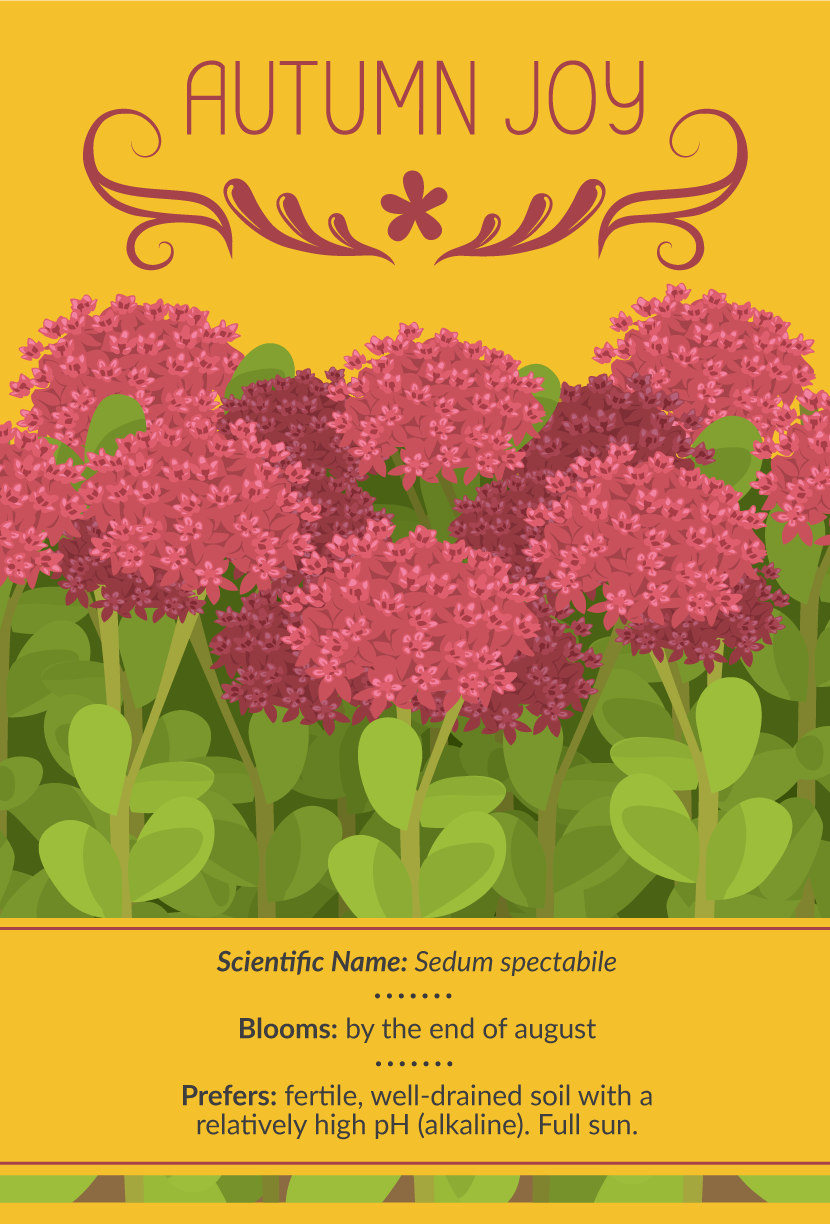
Lemon Queen Sunflower
Scientific name: Helianthus
Blooms: July-September
This sunflower cultivar grows to around seven feet tall and produces an abundance of small, yellow sunflowers starting in July.
It usually blooms for at least two months, making it a great way to bridge the gap between late summer and early fall.
If you haven’t added this to your garden already, you should buy established plants from your local nursery rather than trying to start it yourself.
It needs fertile, moist soil that is rich in humus to thrive. True to its name,
it also prefers full sun and ideally a lot of heat to produce an abundance of flowers, but it can survive with less.
Because it will grow to around seven feet, give it support to prevent it from collapsing on itself.
Just like Autumn Joy, watch out for slugs and snails, but also keep an eye out for powdery mildew – it can devastate your Lemon Queen bed.
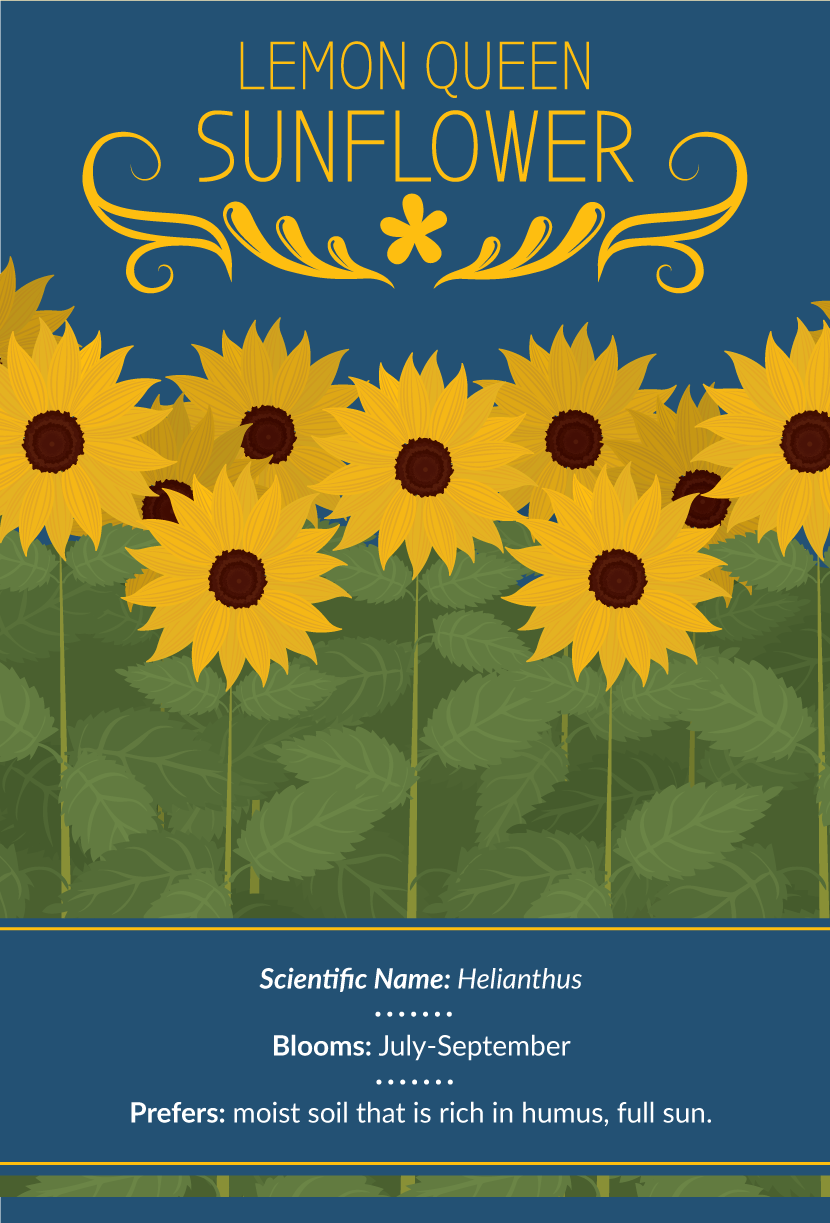
Garden Phlox
Scientific name: Phlox paniculata
Blooms: July-September
Phlox is a favorite summer flower in general, but the Garden phlox is easily the most popular cultivar for late blooms.
It starts bearing flowers in July and, with some care, can continue blooming into late September.
Depending on the Garden phlox cultivar you choose, you can have a bed of pink, lavender, violet, or white flowers.
You may even want to mix your cultivars for a late-summer multicolor burst.
Like many late-summer flowers, phlox prefers a rich, organic soil that drains well. It can survive in light shade,
making it a good flower to add to a bed that isn’t blasted by the sun.
It doesn’t do well in drought conditions and prefers not to be watered overhead,
so consider using drip irrigation and mulching the soil to retain moisture in the summer heat.
If you want to extend the blooming season of your phlox, prune flower heads that have faded or died prematurely.
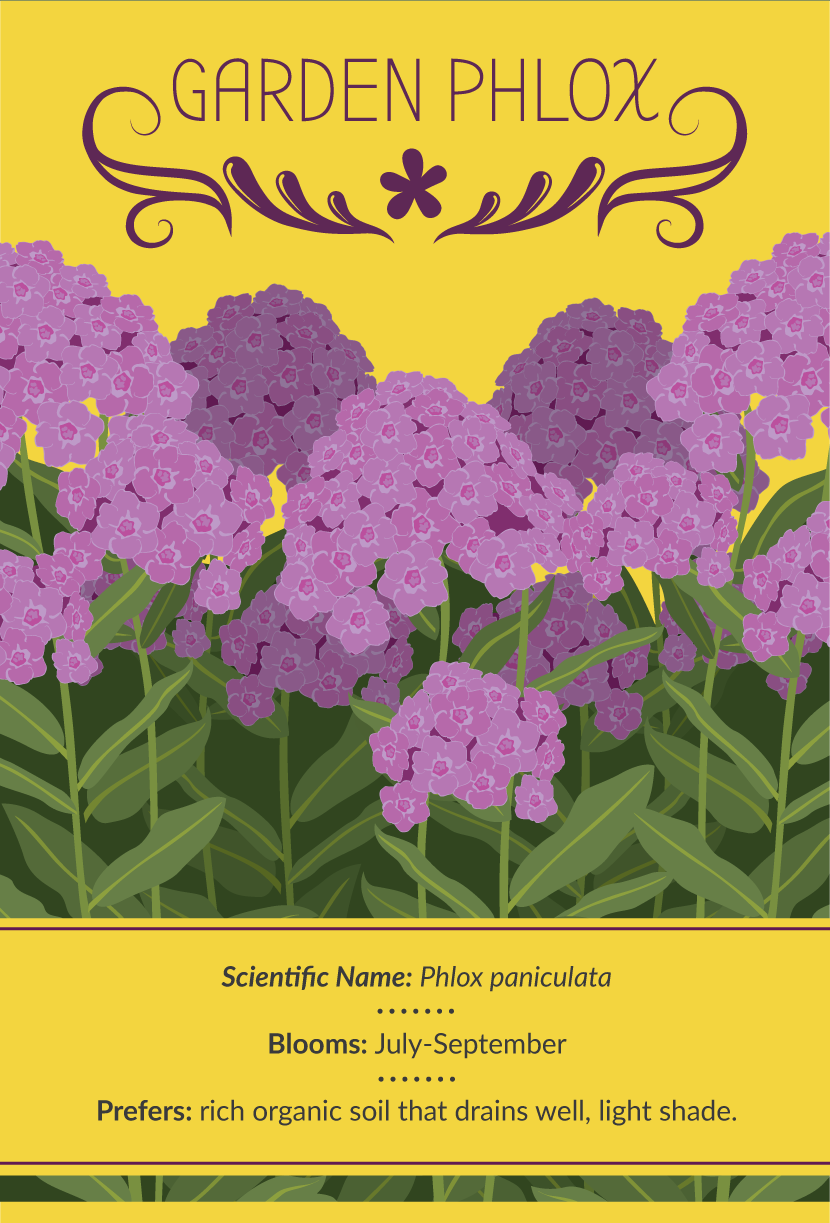
Honorine Jobert
Scientific name: Anemone x hybrida
Blooms: August-October
Also known as Japanese anemone or windflower, Honorine Jobert is a hybridized flower that blooms from August to October.
They grow to only three feet and tend to clump, forming dense clusters of pink or white flowers.
They’re quite hardy, not suffering much from pests or diseases save for the occasional powdery mildew or Japanese beetle.
These flowers love well-draining soil rich in organic matter, so be sure to amend with a heavy dose of compost.
They can tolerate partial shade to full sun but will suffer if they are left in extremely bright and hot areas for too long.
Try planting them in an spot that gets six hours of direct sun per day, with a couple of hours of shade as well.
Just be sure not to locate them in an area that will get excessively wet because they will die quickly.
Cultivation
Will grow in any garden soil, but avoid excessive winter wet; dislikes being moved around. Can spread rapidly once established.
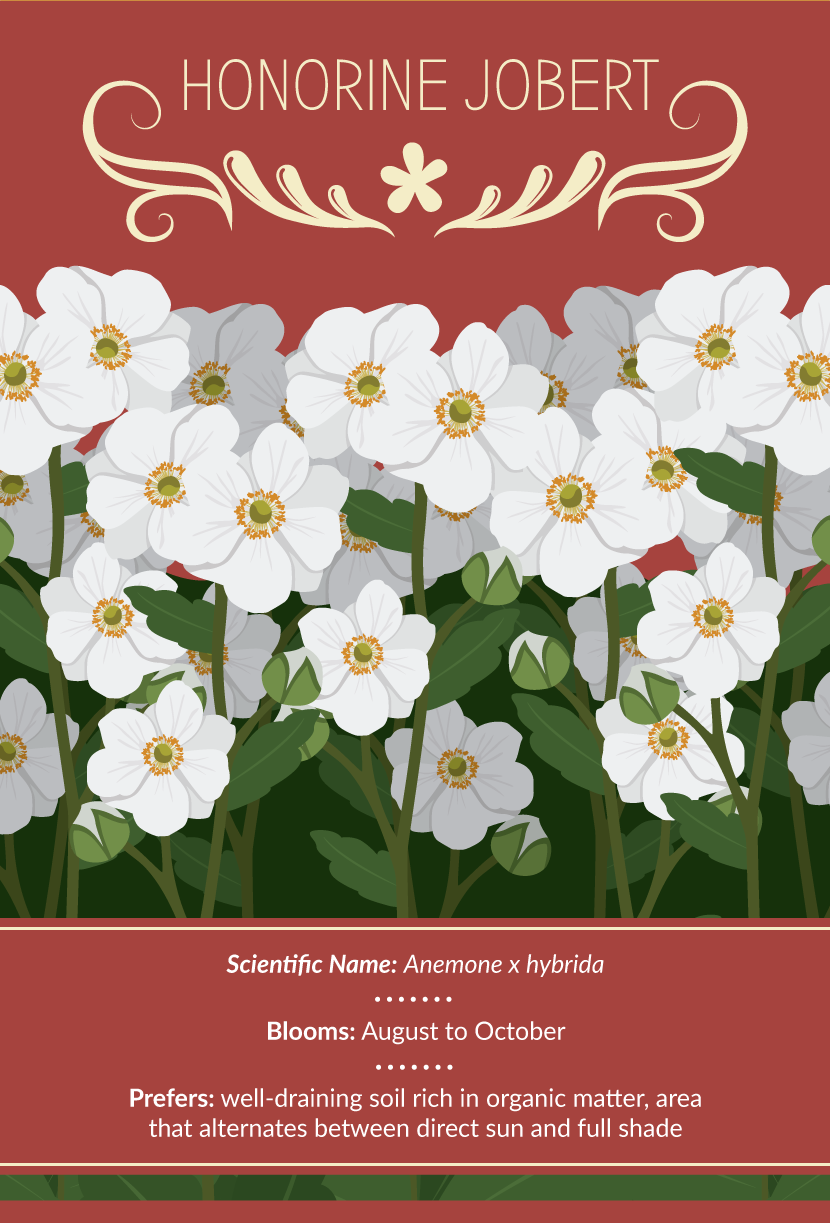
Toad Lily
Scientific name: Tricyrtis hirta
Blooms: late summer-early fall
The flowers of the toad lily are a great way to round out a late-summer to early-fall bloom in the garden, especially if you don’t get a lot of sun.
They bloom into a bouquet of bell-shaped flowers that are white and dotted with purple spots.
The biggest benefit to adding toad lilies to the garden is how easy it is to care for them – provided they are planted in optimal conditions.
They require well-draining soil that is full of organic matter like many late-blooming summer flowers, but what makes the toad lily unique is its love of full shade.
This makes it the perfect flower to put up against your house or under larger plants, like roses or shrubs.
The only care required is pruning stems back as they die in the wintertime. This prepares them for a vigorous future season of growth.
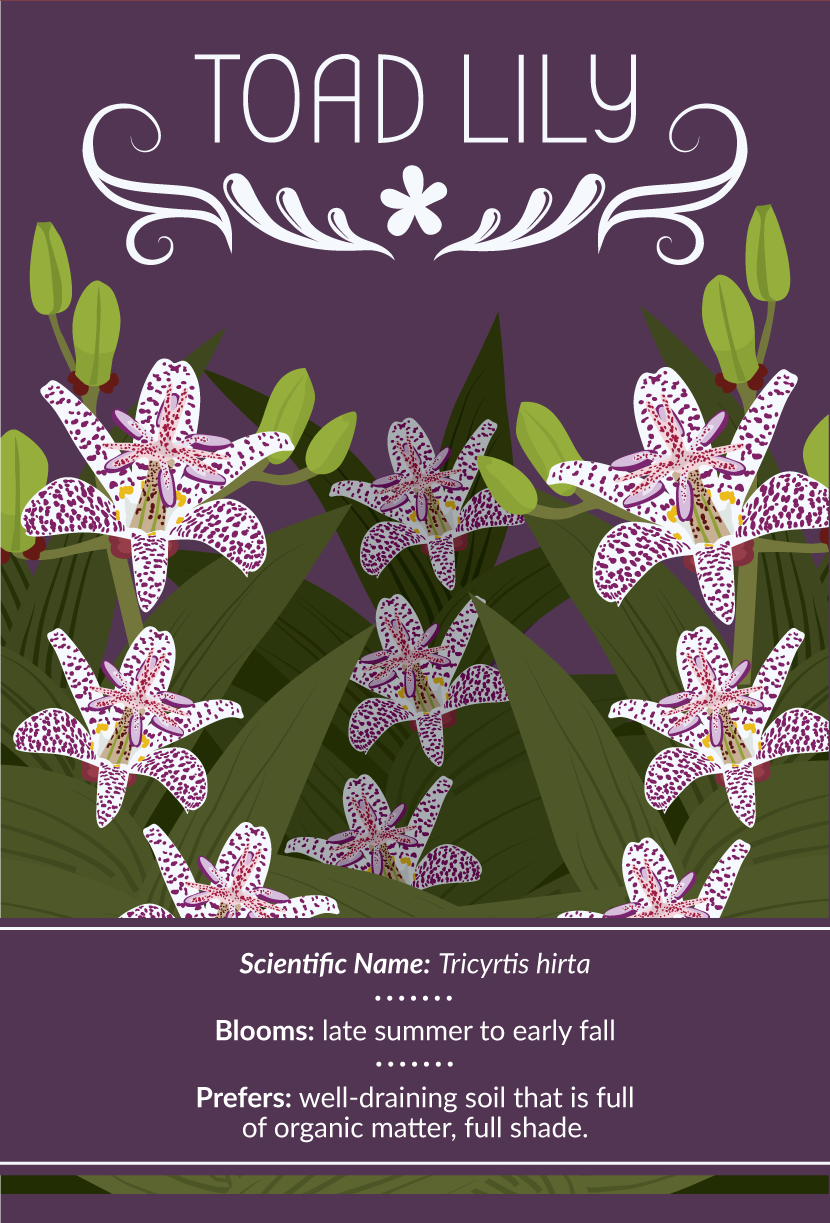
Goldenrod or Fireworks
Scientific name: Solidago rugosa
Blooms: August-October
This is one of the few flowers whose name doesn’t oversell the beauty of its blooms.
The striking burst of minute, yellow flowers pop from narrow stems, making it look like an explosion of fireworks in the summer sky.
Better yet, goldenrod can tolerate soil that doesn’t have much nutrition, though it does want sandier soil than most flower species prefer.
It thrives in full sun, but if you can’t manage that in your garden, it can survive in some shade as well.
As winter approaches, you should cut it back to tidy your garden as you enter the dormant season.
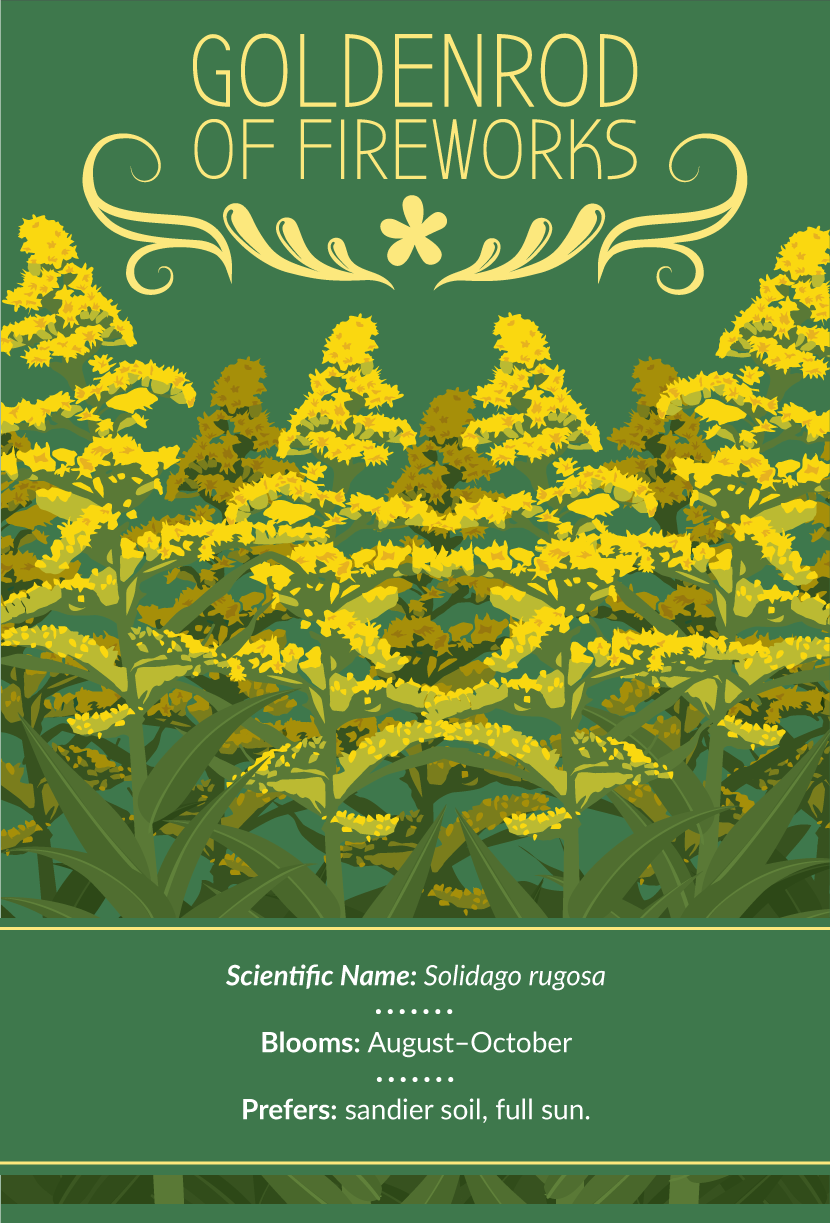
Russian Sage
Scientific Name: Perovskia atriplicifolia
Blooms: mid-summer-early fall
Unlike many of the flowers mentioned, Russian Sage adds a muted, metallic-blue color to the garden, which is a great complement to many of the brighter late-summer blooms.
It’s a woody, deciduous plant that can grow up to four feet tall. Depending on the cultivar, its color can range from a grayish green to a pale blue.
Like goldenrod, it can tolerate poor soil and even some chalkiness. The one environmental requirement that is non-negotiable is full sun.
It’s free of most pests and diseases, so once you add to your garden, it is a “set it, and forget it” late-summer bloomer.
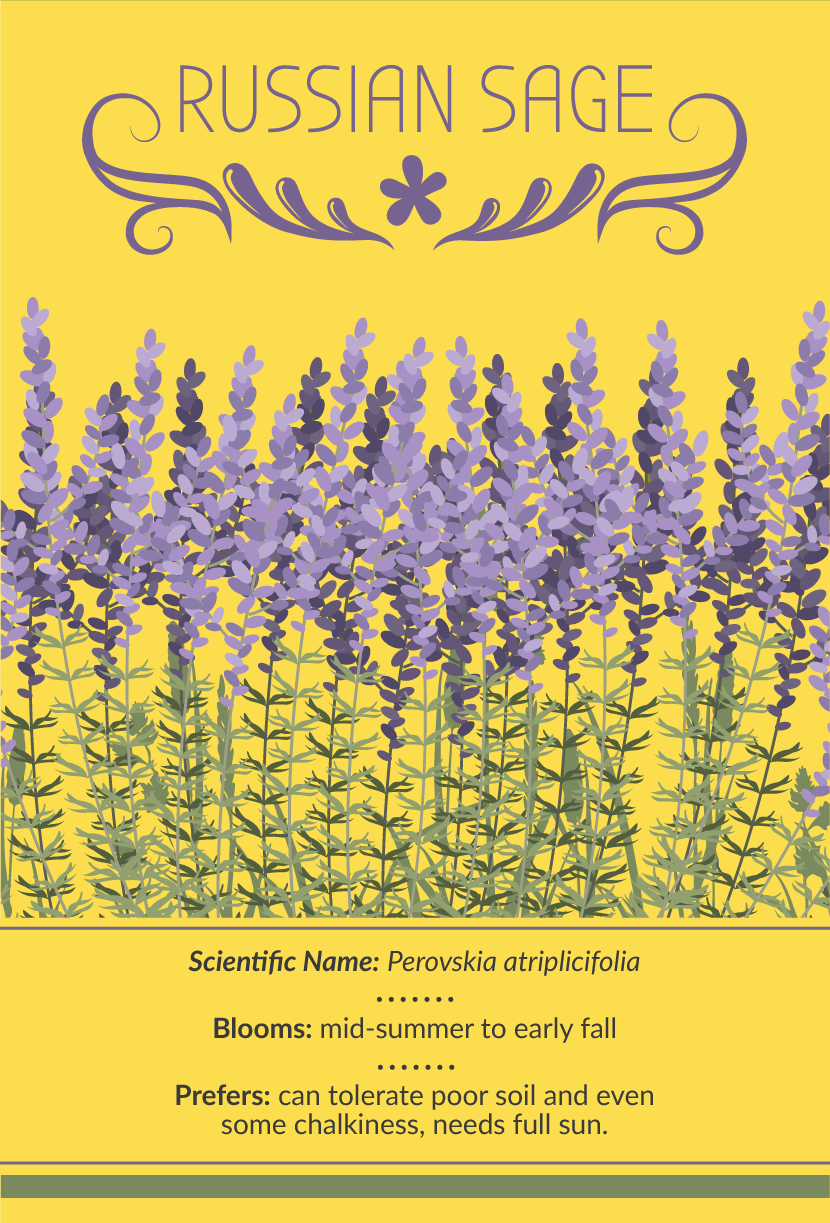
Nancy Lindsay
Scientific name: Colchicum autumnale
Blooms: early to mid-fall
Nancy Lindsay is popular in Europe but will thrive wherever growing conditions are met.
It grows to a height of only seven inches, making it the smallest late bloomer in the list.
When it blooms in early fall, it will give you beautiful light-pink flowers in a ”crocus-style” pattern.
They’re easy to grow, provided your soil is full of organic matter and drains well.
If you can get soil closer to a gritty loam texture, your Nancy Lindsay bed will thrive.
To prolong the blooming period, remove flowers as soon as they die. (Though this can be a laborious process.)
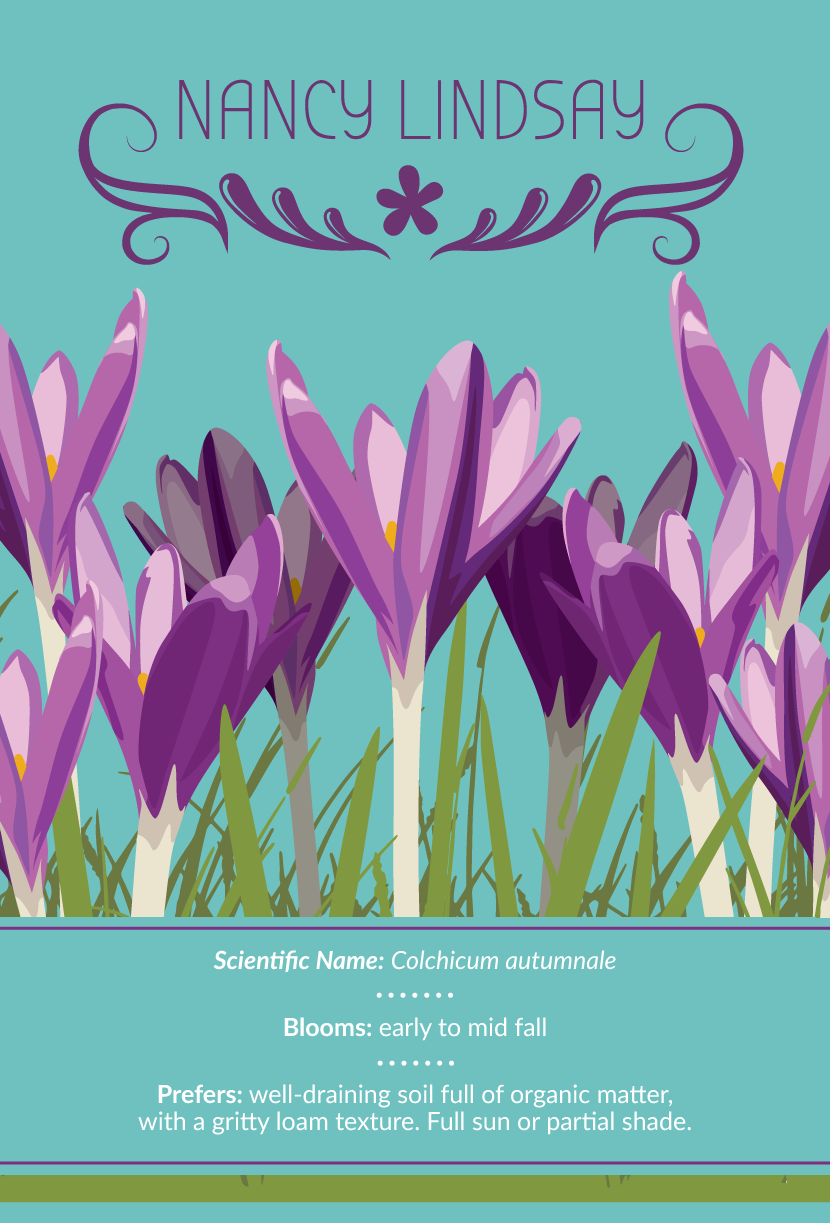
Go Forth, and Plant Beautiful Flowers
As summer winds down, head to the nursery, and pick up some of the varieties that caught your eye.
Most of them require little to no care, save for planting them where their environmental conditions are met.
A bit of pruning here and there and keeping a watchful eye for common pests and diseases is all that’s needed to tap into an arsenal of late-summer color.
Embed the article on your site

